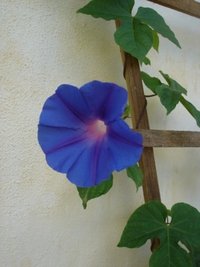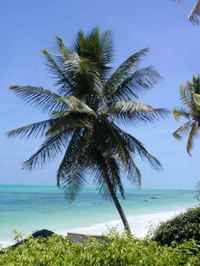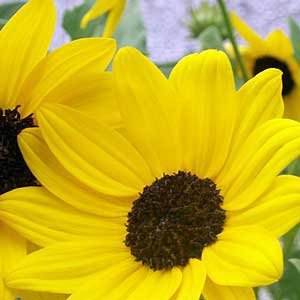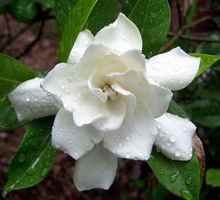





As gardener in a seaside community you need to always consider your choice of plants based on their saline-resistance. Not just salty soil, but especially salt-laden winds can wreak havoc with your beautiful plantings. Fortunately there are a number of plants that are eminently salt-resistant. Because of my location I will concentrate here on plants that grow in the beach areas of Florida.
The problem with salt
As we all know, salt attracts water. An excess of salt in the soil or air will prevent a plant from absorbing water properly and will actually cause the plant to secrete water, a process known as exosmosis. Leaf burn, leaf drop and eventually death of the plant will result with any plant that has no proven tolerance to high levels of salinity. In addition, a plant in our coastal areas will also have to withstand high winds, and airborne salty spray.
To make matters worse, the soil near the sea is generally sandy, lacking in organic matter, and therefore it retains less water and carries fewer nutrients than less porous soils. This makes plants growing in this area even more susceptible to salt damage
There is also the immediate risk of plants being submerged in salt water after a flood such as frequently occurs with hurricane force winds. During the especially active 2005 Hurricane season, the beautiful Key West Garden Club which is located in the historic Martello Tower in Key West had a 6-foot tidal wave rip through its grounds which left standing salt water for days afterwards. Nearly all trees in the beautiful gardens were either severely damaged or destroyed... but you wouldn't know it today. Visit their website for a look at how far they've come, and be sure to visit the gardens themselves if you're ever in Key West!
There are several grades of salt tolerance - some plants will thrive even on the sandy beaches, directly exposed to the salty air, others will require some protection and are frequently seen in medians and gardens in the vicinity of the sea.

Salt tolerant plants
Among the most salt-tolerant are the following. I am happy to see my beloved Plumeria trees included in this category! sea grape (Coccoloba uvifera), pin oak (Quercus palustris), white ash (Fraxinus americana), red cedar (Juniperus silicicola) and the (in our area) ubiquitous saw palmetto (Serenoa repens ) are all highly salt tolerant trees. Of course no beach scene is complete without a coconut palm  (Cocos nucifera) and these are also excellent choices for planting anywhere near the sea, as are true date palms (Phoenix dactylifera).
(Cocos nucifera) and these are also excellent choices for planting anywhere near the sea, as are true date palms (Phoenix dactylifera).
Filling in the spaces between these should be the following shrubs: Florida privet (Forestiera segregata), Natal plum (Carissa macrocarpa), Bougainvillea (Bougainvillea spectabilis), Confederate jasmine (Trachelospermum jasminoides) and oleander (Nerium oldeander). Pomegranates (Punica granatum) are said to perform well in salty conditions too.

For accents reach for: English ivy (Hedera helix), Virginia creeper (Parthenocissus quinquefolia) can beinvasive. Prickly pear cactus (Opuntia spp.), coleus (Coleus blumei), juniper (Juniperus) and winterberry holly (Ilex verticillata) as well as many succulents. For color use the following: beach rose (Rusa rugosa), ivy geraniums (Pelargonium peltatum ) will do well in hanging baskets, Lantanas, Periwinkle (Vinca minor), morning glory (Ipomoea), Kalanchoe (perennials in Florida), the aptly named beach sunflower (Helianthus debilis)  and some varieties of daylilies.
and some varieties of daylilies.
Moderately salt-tolerant plants
Go back 100 to 200 feet from the beach and gardening becomes easier. But still, there is a great deal of airborne salinity that plants should be able to withstand. Some Hoyas are pretty salt tolerant (H. halophila and H. diversifolia). Macadamia nut trees (Macadamia integrifolia ) can take some degree of salt air, as do most citrus plants and figs. Most varieties of gardenia will accept salty air as does Erica. Honeysuckle (Lonicera), crabapple, and lilacs further north are all good choices.
As another solution to the salinity problem, you have the option of using plants in pots which can be sheltered when conditions are extreme, and after any exposure to direct salt water, such as after a hurricane, the pots can easily be flushed with fresh water to remove excess salinity.
All in all, there are plenty of choices for the beachside gardener!
(Editor's Note: This article was originally published on February 6, 2008. Your comments are welcome, but please be aware that authors of previously published articles may not be able to respond to your questions.)
Copyright © www.100flowers.win Botanic Garden All Rights Reserved